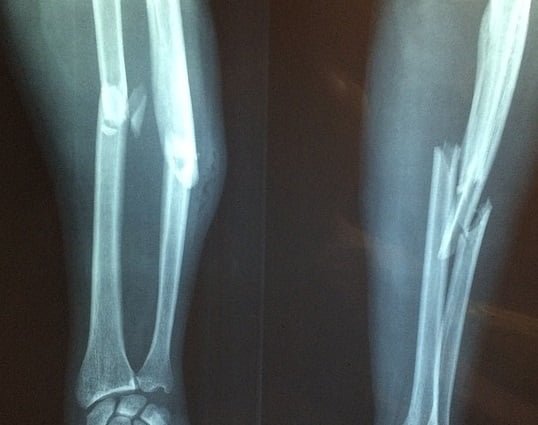Steglatro side effects are not uncommon. Steglatro is the brand name of Ertugliflozin. It belongs to the class of drugs called SGLT2 (sodium-glucose co-transporter 2) inhibitors.
Inhibition of these transporter proteins inhibits the reabsorption of the filtered glucose back into the plasma. When more glucose is lost in the urine, it is accompanied by a loss of fluid as well.
Thus, the most common side effects of Steglatro are urinary tract infections, genital fungal infections, dehydration, and kidney disease.
It is important to note that Steglatro (Ertugliflozin) is only indicated for the treatment of patients with Diabetes Mellitus Type 2.
Patients with Diabetes and heart failure benefit the most from using SGLT2 inhibitors. It should not be used in children and patients with diabetes mellitus type 1 patients [Ref].
It should also be avoided in patients with hypotension, volume depletion, end-stage renal disease, and patients who are on hemodialysis. Also, it is not advisable for pregnant females with gestational diabetes.
Steglatro Side Effects:
Ertugliflozin, like empagliflozin and dapagliflozin, is an SGLT2 inhibitor. It is associated with similar side effects to other SGLT2 inhibitors. These are as follows:
Urinary tract infections:
Owing to the mechanism of action of ertugliflozin, urinary tract infection is the most common side effect of Steglatro. UTIs in diabetic patients can become very complicated and difficult to treat.
It is important that all diabetic patients who are using Steglatro (Ertugliflozin) or any other SGLT2 inhibitors should know the symptoms of UTI.
Patients must get their urine samples checked if they have a fever, burning sensation while passing urine, frequent urination, especially in small quantities, difficulty in passing urine, fouls smelling urine, or if they notice pus in the urine.
If symptoms are severe, patients must stop taking Ertugliflozin and consult a healthcare provider immediately.
How to prevent Urinary tract infection when taking Ertugliflozin?
All patients who are on Steglatro treatment must be asked to take an adequate amount of fluid and keep themselves well hydrated.
Increasing fluid intake helps in increasing urine flow, resulting in a bladder lavage-like effect. This inhibits the growth of bacteria.
Patients must also be asked to maintain good hygiene, wash properly, and then dry the genital area after washing and voiding.
Patients who have any anatomical urinary tract problem, those who are on corticosteroids, immunocompromised patients, and patients with a history of frequent urinary tract infections should not initiate treatment with an SGLT2 inhibitor, including Steglatro.
Patients should take a healthy diet rich in probiotics and vitamins.
How is UTI (urinary tract infection) diagnosed and treated?
UTI is diagnosed with the help of a laboratory test called urinalysis or urine routine examination (Urine RE).
Urinalysis will be positive for nitrates, leukocyte esterases, and pus cells or white blood cells will be more than 5 per high power field.
If urinalysis shows a urinary tract infection, it is better to perform a urine culture before starting antibiotics. Urinary culture and bacterial sensitivity will identify the type of bacterial infection and the appropriate antibiotics for that specific bacteria.
Commonly used empirical antibiotics for UTIs include cefixime, cefuroxime, co-trimoxazole, and ciprofloxacin.
Genital yeast infections and Necrotizing Fasciitis:
Genital yeast infections are especially common in females who are taking an SGLT2 inhibitor like ertugliflozin. Female patients can develop vaginal candidiasis, vulval, and vulvovaginal candidiasis. Men may develop balanitis and balanoposthitis.
Genital yeast infections should be suspected if female patients observe vaginal discharge, vaginal soreness, painful sexual intercourse, and genital itching.
Men can have sore glans penis, redness, itching, redness, and painful erections.
Necrotizing Fasciitis, also called Fournier’s gangrene, is a serious infection of the perineum. It affects the genital area and the surrounding structures and is a potentially life-threatening complication of SGLT2 inhibitors, including ertugliflozin.
The infection spreads rapidly from the genital area into the bloodstream. This causes a rapid decline in the health of the person, hypotension, and sepsis, and may result in death.
Any person who has a genital infection with high-grade fever, hypotension, and systemic toxicity should be evaluated for Fournier’s gangrene.
How to prevent genital yeast infections and Fournier’s gangrene?
Patients with symptoms of genital infection should not take Steglatro. Those taking Steglatro should be advised to maintain good hygiene and keep well hydrated. It is recommended to take at least 8 glasses of water daily.
Patients should be asked to wash thoroughly after voiding urine and passing stools, and keep the genital area clean and dry.
Loose-fitting undergarments should be worn, which should be changed daily. Patients may also be asked to increase probiotic use, such as yogurt.
How to diagnose and treat genital yeast infections and Fournier’s gangrene?
Genital yeast infections are usually diagnosed based on the patient’s symptoms. However, physicians might need to examine the area and take a swab for microscopy and KOH staining.
Fournier’s gangrene is a life-threatening condition. These patients require hospital admission and indoor monitoring.
Patients require blood cultures and frequent monitoring of routine chemistry tests such as renal and liver functions.
Tissue sampling for bacterial culture and sensitivity may be done to identify the organism as well.
How to manage genital yeast infections and Fournier’s gangrene?
Genital yeast infections can be treated with topical antifungal drugs such as clotrimazole and miconazole in mild to moderate cases.
In severe cases and patients who have an inadequate response to topical antifungal drugs, oral fluconazole may be advised for three to five days.
Patients with Fournier’s gangrene require hospitalization, intravenous fluids, intravenous broad-spectrum antibiotics, and debridement of the infected area.
It is important to discontinue Steglatro in all patients and keep the blood sugars well controlled with other medications. Insulin is the preferred treatment in patients who have Fournier’s gangrene.
Lower limb amputations:

Lower limb amputations have been observed in clinical trials in patients taking ertugliflozin.
The risk is common with canagliflozin. However, in patients who were on ertugliflozin, the risk of lower-limb amputations was 0.2% and 0.5% with 5 mg and 15 mg compared to 0.1% with placebo.
The exact mechanism of the increased risk of lower limb amputations is not known.
Nonetheless, patients who are at risk of developing lower limb infections and amputations should not be taking ertugliflozin.
How to prevent Lower limb amputations when on Steglatro?
It is important not to prescribe ertugliflozin if the patient is at risk of lower limb amputation.
Patients who may be at high risk include those with active infection, those with recurrent infections, those with severe sensory neuropathy, patients with Charcot’s joint, and patients with peripheral vascular disease.
Patients must be asked to inspect their feet daily before going to sleep.
If any area of swelling, redness, or oozing is noted, patients must be asked to report to their healthcare provider immediately.
It is important to emphasize general hygiene and foot hygiene in specific. Patients must be asked to wash their feet daily and then keep them dry.
Diabetic patients should wear properly fitting shoes and cotton socks. If the feet are dry, apply olive oil or any moisturizer at bedtime to prevent cracks.
Dehydration and Hypotension:
All SGLT2 inhibitors act by inhibiting glucose reabsorption. This leads to excess glucose going into the urine. As glucose is osmotically active, it draws water with it. Hence, osmotic diuresis occurs.
The more glucose is excreted into the urine, the more water accompanies it and the more water is lost from the body. This may cause dehydration and ultimately hypotension.
Steglatro exerts a similar effect since it has the same mechanism of action. Diuresis resulting in dehydration is especially common in patients with more marked hyperglycemia.
How to prevent dehydration and hypotension:
Before starting treatment with Steglatro or any SGLT2 inhibitor, it is important to assess the volume status of the patient.
Furthermore, patients on vasodilators, antihypertensive drugs, and diuretics are especially at risk. These patients may need dose adjustment (dose reduction) in their hypertension medications when initiating Steglatro treatment.
Patients must be asked to take at least 8 to 12 glasses of water daily and keep themselves well hydrated. Strenuous exercises, especially in hot weather, should be discouraged.
In case of persistent hypotension or symptomatic hypotension, Steglatro treatment may be discontinued.
How to know your hydration and volume status?
When a person is dehydrated, they may feel more thirsty. He may also notice oral and mucosal dryness.
The tongue is normally moist, but dehydrated people have dry tongues, and the saliva is more concentrated and difficult to expel. Patients might also report postural dizziness, vertigo, and blackouts.
Objective findings may include low blood pressure (hypotension). These patients may have dizzy spells when getting up from a sitting or lying position.
Occasionally, the blood pressure is normal when checked, but still, patients have symptoms. These patients are usually hypertensives and may have uncontrolled hypertension.
In such cases, the blood pressure should be checked in both the standing and sitting positions. A drop of 10 mmHg in the systolic blood pressure upon standing is considered significant.
In severe dehydration, the patient might notice that he/ she is passing less urine than usual. In mild cases, the color of urine becomes darker.
When the kidneys start failing, the volume of urine decreases. Such patients must immediately discontinue the treatment and report to a healthcare facility.
How to manage dehydration and hypotension:
All patients who are alert must be asked to take plenty of water orally. Patients must avoid carbonated and sugary drinks as this might be counter-productive in diabetic patients.
Patients who are markedly symptomatic may be asked to lie flat and elevate their legs above the body.
Intravenous fluids may need to be administered. 0.9% saline is usually preferred; however, lactated ringer may be given.
If the renal functions are deranged because of dehydration, patients may need to be hospitalized and monitored for a few days until stable.
Acute Kidney Injury and Renal Failure:
Steglatro side effects do not include direct nephrotoxicity; however, indirect mechanisms may result in kidney injury.
These include:
- Dehydration and volume depletion resulting in pre-renal acute kidney injury
- Idiosyncratic drug reactions
- Infections affect the kidneys directly or indirectly as a result of systemic toxemia.
- Kidney injury occurs as a result of the concomitant medications and is not directly related to ertugliflozin.
How to prevent kidney injury in patients on Steglatro?
Identifying patients who may be at high risk is very important. All patients who have moderate to severe kidney dysfunction should not be initiated on Steglatro treatment.
Patients must be asked to avoid other nephrotoxic drugs, such as the concomitant use of NSAIDs. Frequent and high doses of NSAIDs may cause kidney function to decline rapidly.
Patients must have well-controlled diabetes and hypertension. Dehydration and hypotension must be avoided. Patients must be asked to ingest a diet that is low in protein and salt.
How to diagnose kidney failure?
Symptoms of kidney failure are subtle. The only gross symptom that a person might note is a reduction in urine volume.
Thus, if there is a slight suspicion that kidney function is declining, consultation with a healthcare provider is important.
Urinalysis and renal function should be assessed in such patients. A delay in the diagnosis might result in long-term complications and a complete kidney shutdown.
How to treat kidney failure?
It is important to stop Steglatro and any other offending nephrotoxic drug. Patients must be given oral or intravenous hydration depending on the severity of renal failure and dehydration.
Frequent monitoring of renal function should be done to assess improvement or worsening of kidney function.
In patients with markedly deranged renal function, consultation with a nephrologist may be indicated. Rarely, dialysis may be required.
Bone Fracture – Rare Steglatro Side Effets:

Bone fractures have been associated with the use of SGLT2 inhibitors. Although bone fractures have been strongly associated with the use of Canagliflozin (Invokana), it is prudent to be vigilant when prescribing Ertugliflozin too.
Long-term studies have not revealed any association of bone fracture with Steglatro use. Patients, however, should be assessed for the risk of bone fracture before treatment initiation.
How to prevent Bone fractures?
Patients who are at a high risk of bone fractures should not be initiated on Steglatro treatment unless there are strong indications.
All patients should be supplemented with high-dose calcium and daily or high-dose weekly vitamin D.
Patients must be asked to perform regular exercise and strengthening exercises.
Euglycemic Diabetic Ketoacidosis:
Euglycemic ketoacidosis is a rather newer term that implies the development of ketosis regardless of plasma blood glucose.
Euglycemic ketoacidosis occurs even in patients with normal blood glucose. This condition has been strongly associated with the use of SGLT2 inhibitors.
Since SGLT2 inhibitors do not stimulate insulin secretion or enhance insulin sensitivity, patients with SGLT2 inhibitors develop a relative insulin deficiency. The imbalance of insulin deficiency and normal glucagon results in ketoacidosis.
How to diagnose Euglycemic Diabetic Ketoacidosis?
Patients who develop diabetic ketoacidosis usually have symptoms of hyperglycemia such as excessive thirst, polyuria (voiding frequently and more than usual), hunger, dry mouth and tongue, and irritability or drowsiness.
In patients who do not have hyperglycemia, as in patients with euglycemic ketoacidosis (ketoacidosis without raised blood glucose), symptoms of hyperglycemia are absent. These patients have very subtle and nonspecific symptoms.
Symptoms of ketoacidosis may include abdominal pain, nausea, vomiting, and shortness of breath. Diagnosis is made when a diabetic patient has all the above symptoms, normal blood glucose (less than 250 mg/dl), low bicarbonate, and positive ketones in the blood or urine.
Ketoacidosis results in a high anion gap metabolic acidosis. Since blood glucose is normal, it is important to exclude other causes of high anion gap metabolic acidosis such as uremia and alcohol intake.
How to treat Euglycemic Diabetic Ketoacidosis?
Treatment of Euglycemic ketoacidosis aims to normalize acidosis, ketosis, anion gap, hydration, and the underlying cause of ketosis.
Patients need hydration with normal saline and insulin infusion. If the blood sugars fall to less than 150 mg/dl, saline is replaced with dextrose water.
Bicarbonate is usually not administered unless in very severe cases when the plasma PH falls to less than 7.
Since the defect is relative insulin deficiency, insulin administration is important.
Furthermore, ketones may still be positive even after the correction of acidosis and anion gap. This is a result of the conversion of acetoacetate into Beta-hydroxybutyrate.
Patients need to have urinary output and potassium monitoring closely. Hypokalemia occurs in most patients as insulin drives potassium into the cells. Potassium replacement is therefore very essential.
Patients should be counseled about symptom management at home and regular follow-ups.
How to prevent Euglycemic Diabetic Ketoacidosis?
Euglycemic ketoacidosis can be prevented if baseline risk stratification is done when treatment with Steglatro is initiated.
Patients who have severe pancreatic insufficiency are prone to develop ketoacidosis. These include lean patients, patients who have previously been on insulin for the management of diabetes, rapid insulin discontinuation, and patients with a history of ketoacidosis.
Patients must be asked to monitor blood glucose and ketones at home with the help of ketometer or a simple urine dipstick.
Fluid intake must be increased in case any symptoms of ketoacidosis develop. Ertugliflozin may need to be discontinued, however, the decision to discontinue should be taken only after consultation with a healthcare provider.
Dyslipidemias and other non-significant side effects of Steglatro:
Dyslipidemia is a side effect of all SGLT2 inhibitors. Patients should have a baseline lipid profile done and if indicated, treatment with a statin should be initiated.
Patients should be advised to take a diet that is low in carbohydrates and fats, perform regular exercise, and monitor fasting lipids at regular intervals.
Other less significant Steglatro side effects include headache, back pain, and nasopharyngitis. Hypoglycemia may occur only if Steglatro is administered in combination with insulin or sulfonylureas.
In Conclusion:
Steglatro Side effects that are common include urinary and genital infections, hypovolemia, and hypotension. Rarely, patients may develop bone fractures, renal failure, and develop euglycemic ketoacidosis.



